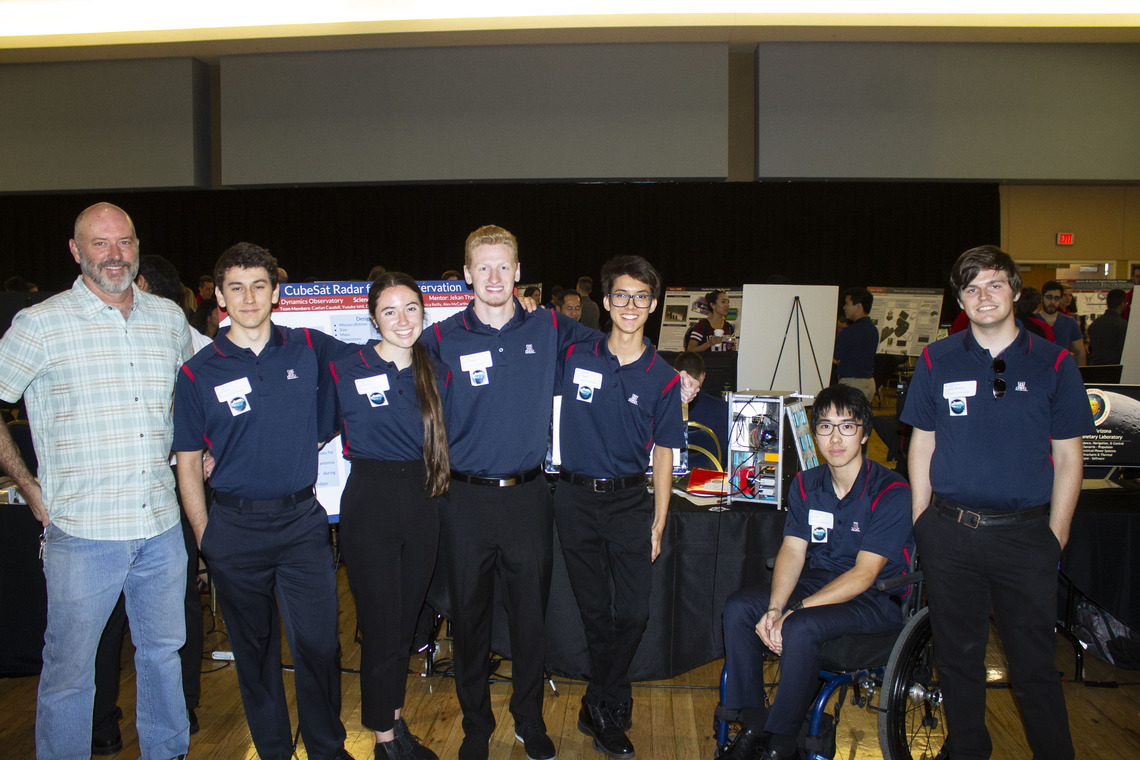Students Design CubeSats to Study Glaciers, Ice Sheets

EDO Director Jack Holt with the CubeSat Radar for Ice Observation design team: Scott Norrix, Jessica Reilly, Dakota Mathez, Caelan Caudell, Yusuke Ishii and Alex McCarthy
Reed Talbot
Two Earth Dynamics Observatory (EDO)-sponsored teams of aerospace engineering seniors spent the past year developing new CubeSat-based approaches for acquiring data about Earth’s ice sheets, glaciers, and the ground beneath them. The seven-member teams developed systems engineering, instruments, computer systems, attitude control, propulsion, electrical, and structural systems of the CubeSats for an Earth Observation mission. EDO provided up to $3,000 per team for materials and EDO's Jack Holt and Jekan Thanga provided primary mentorship, with assistance from faculty Rick Bennett, Ali Behrangi, and Lynn Carter, and LPL Research Specialist Michael Christoffersen.
The goal for both teams was to accomplish the orbital deployment of a radar sounder in order to study the Antarctic and Greenland ice sheets. Orbital radar sounding is something that has not been accomplished for Earth, and would provide fast, comprehensive coverage of Earth’s major ice sheets to measure ice thickness, bed topography, and possibly internal layering and basal water presence.
The CubeSat Radar for Ice Observation team (a.k.a. Farquaad Star Squad) designed a 16U CubeSat concept that supports a radar sounding instrument with a novel four-element antenna system, with each element coiled similar to a tape measure, then deployed once in orbit. is confident the CubeSat could survive over 60 days of operation in space.
The Glacial Research CubeSat included a camera in addition to the radar, and designed a 27U satellite for glacial research. Their antenna design employed foldable antenna elements that are stowed similar to a folded soda straw and then pop into position once orbit is achieved.
Both teams designed their missions for low-Earth polar orbit with several months’ duration, providing dense coverage of glaciers and ice sheets, with data acquired on the night side to minimize ionospheric interference. Data downlink and battery recharging with solar panels would occur on the day side.
The teams were among 118 engineering design teams to present their results recently at UA’s annual Engineering Design Day. The event is the culmination of these two-semester capstone projects, which are inspired and supported by industry and university partners. The students benefit greatly from the opportunity to engage with industry and the research community as they tackle real-world engineering problems, and in turn the sponsors help realize useful solutions—and identify potential interns, employees, and/or graduate students along the way.
EDO looks forward to continuing to sponsor engineering teams and welcomes ideas and mentors for project opportunities to pitch to future classes.

